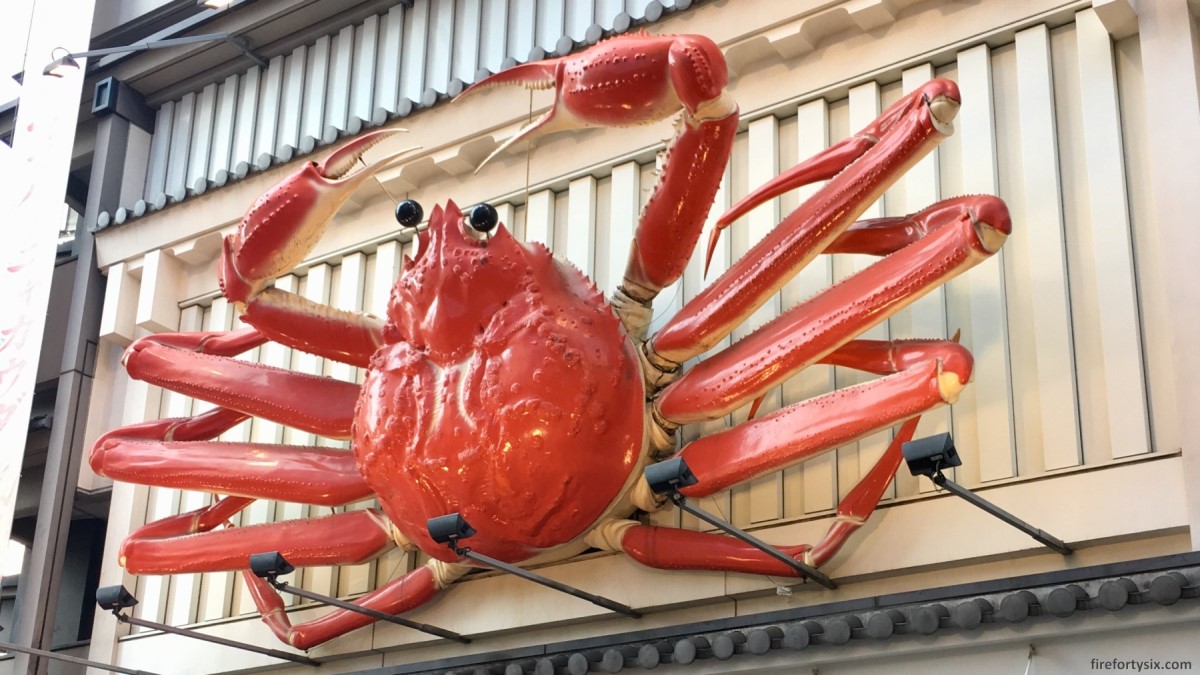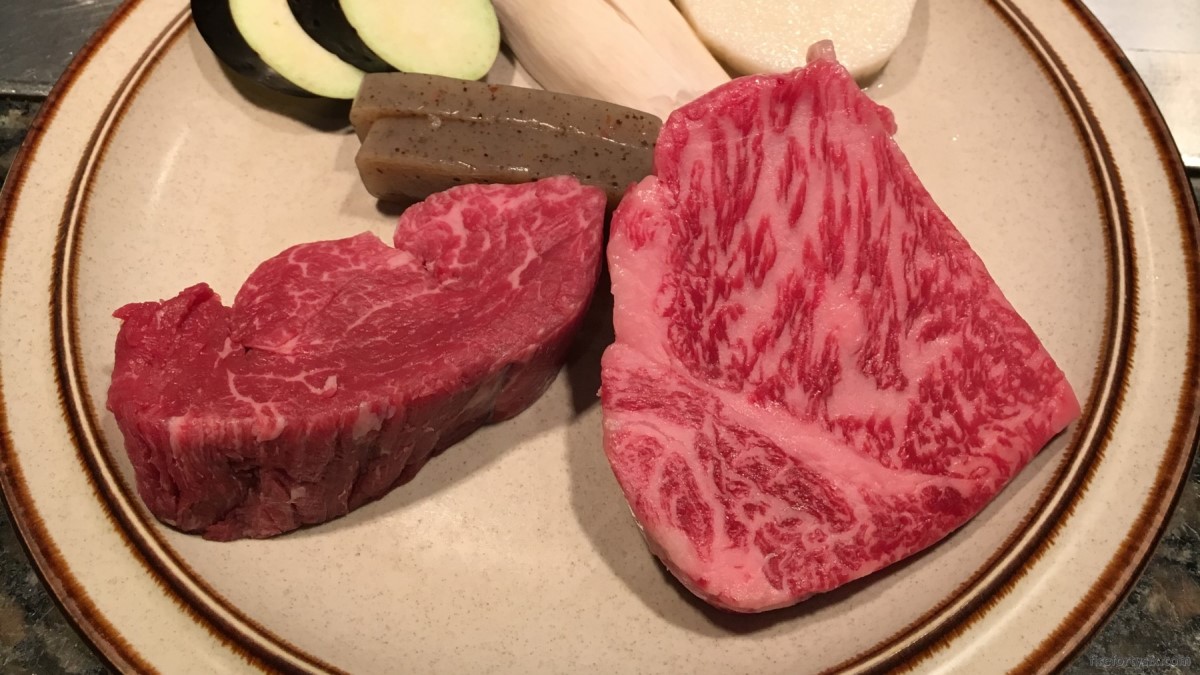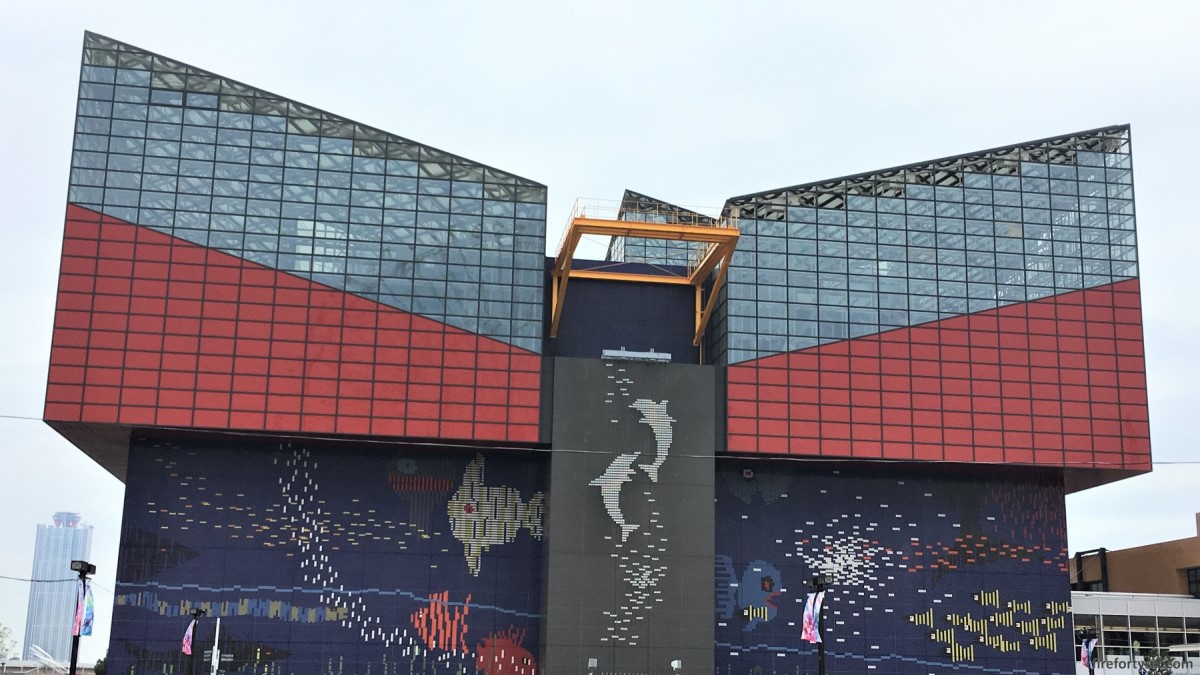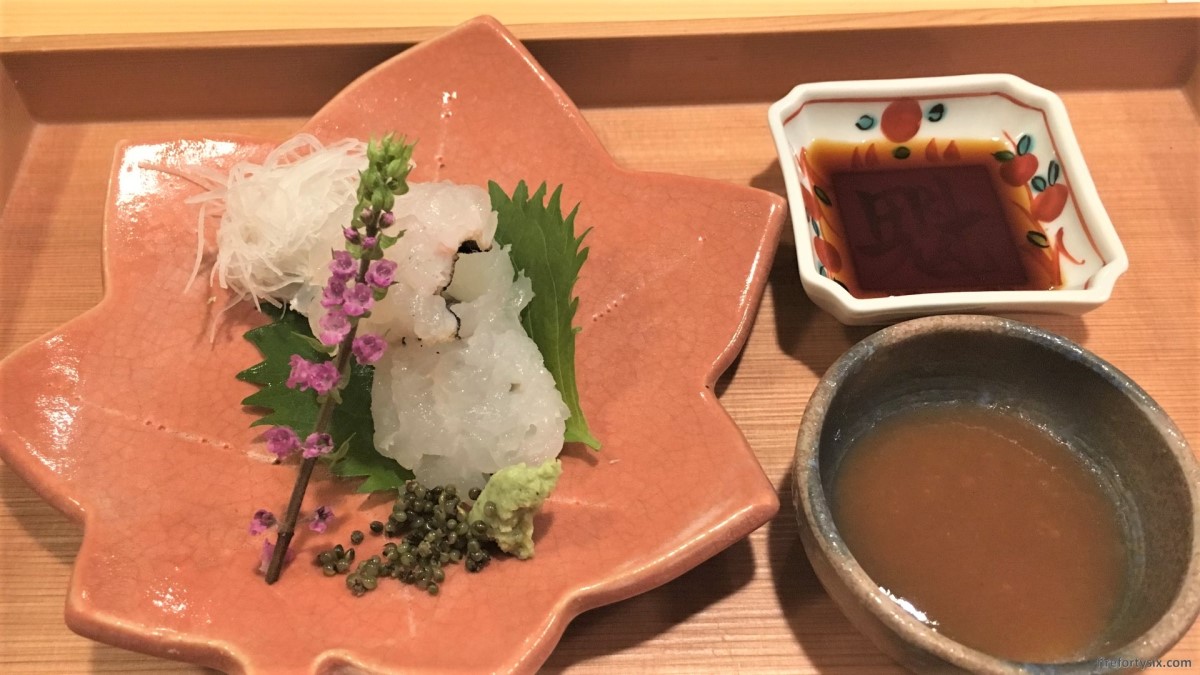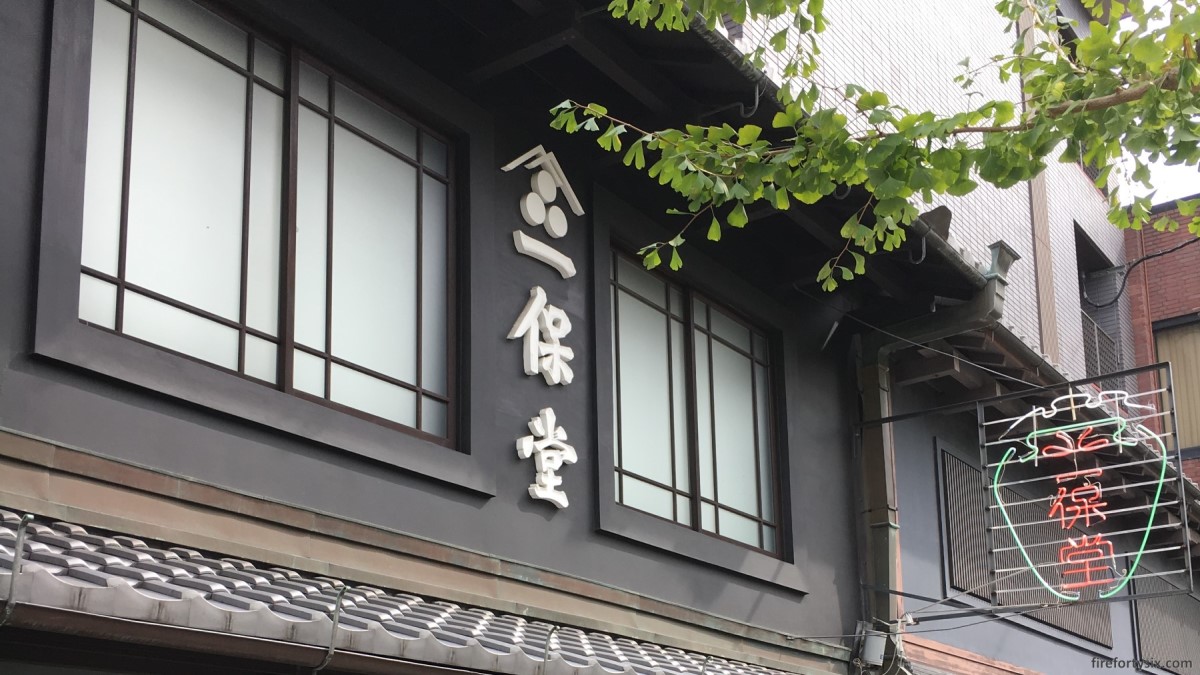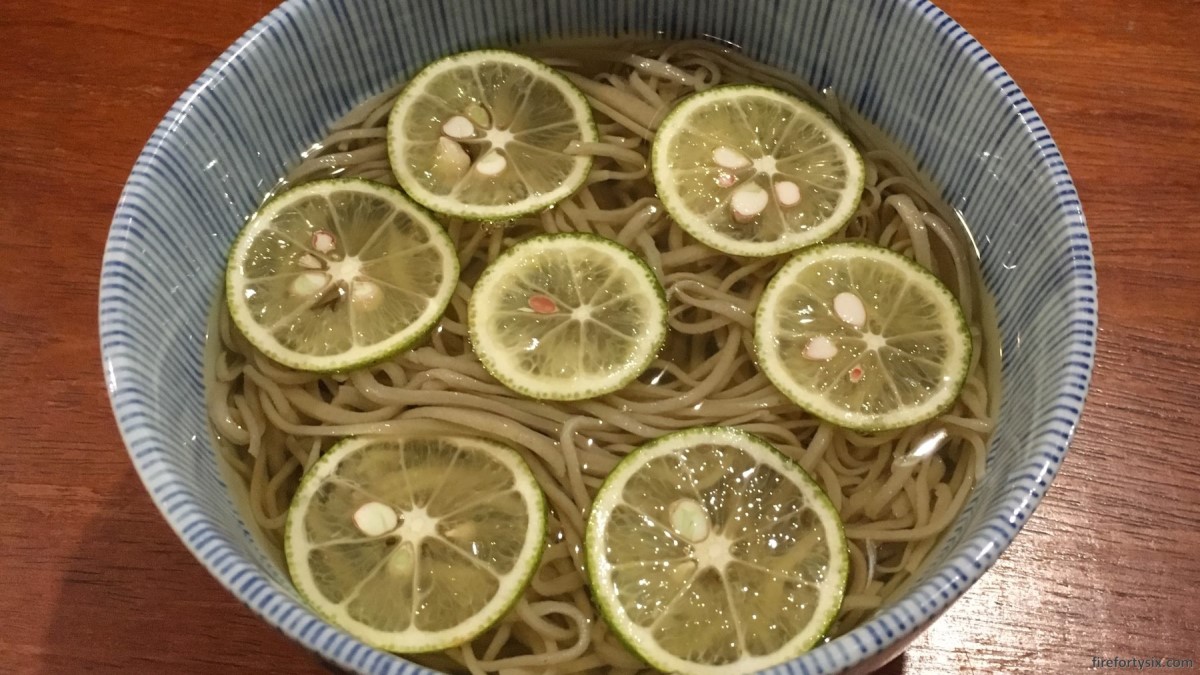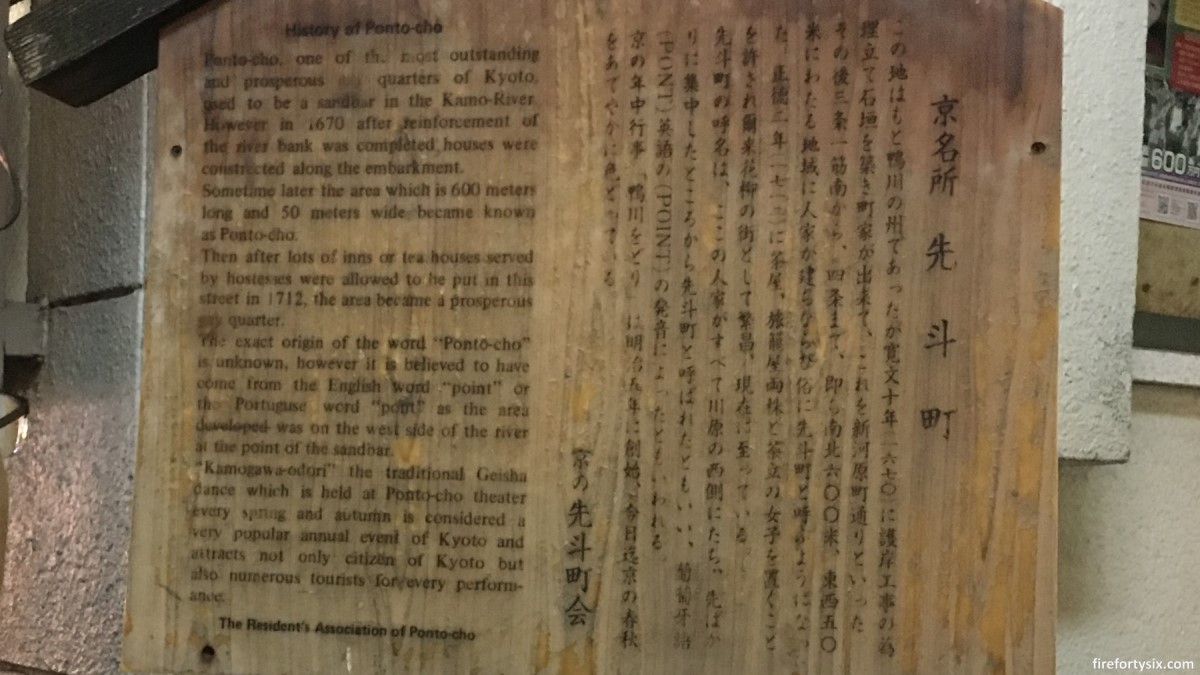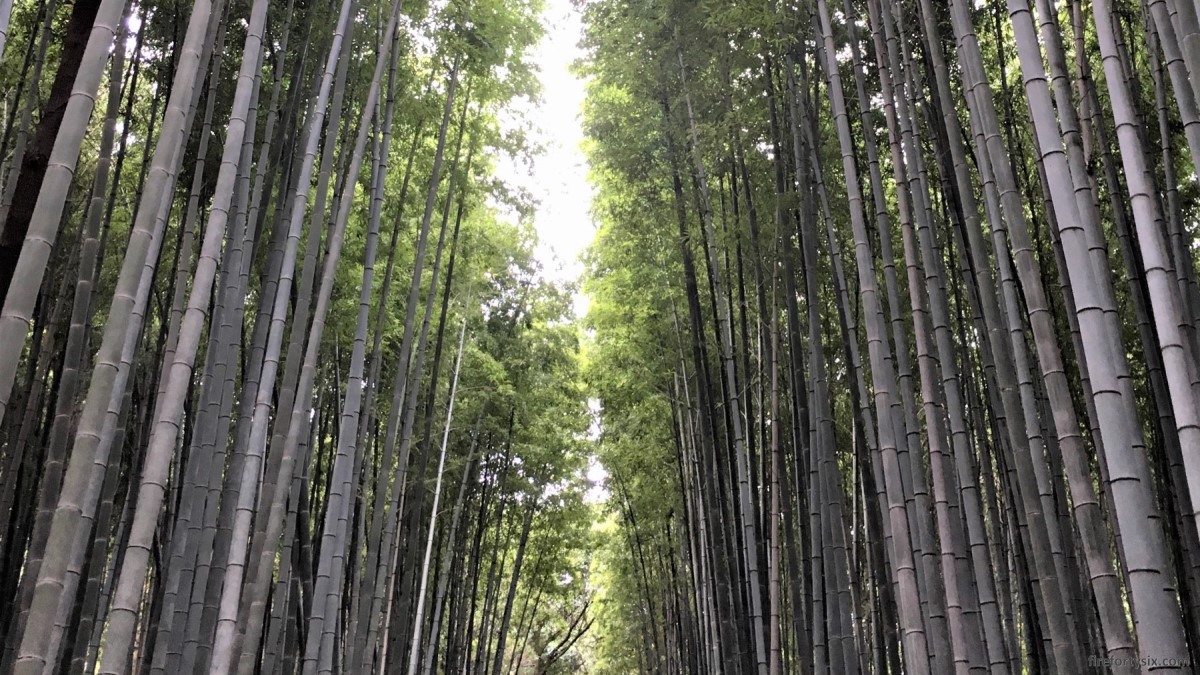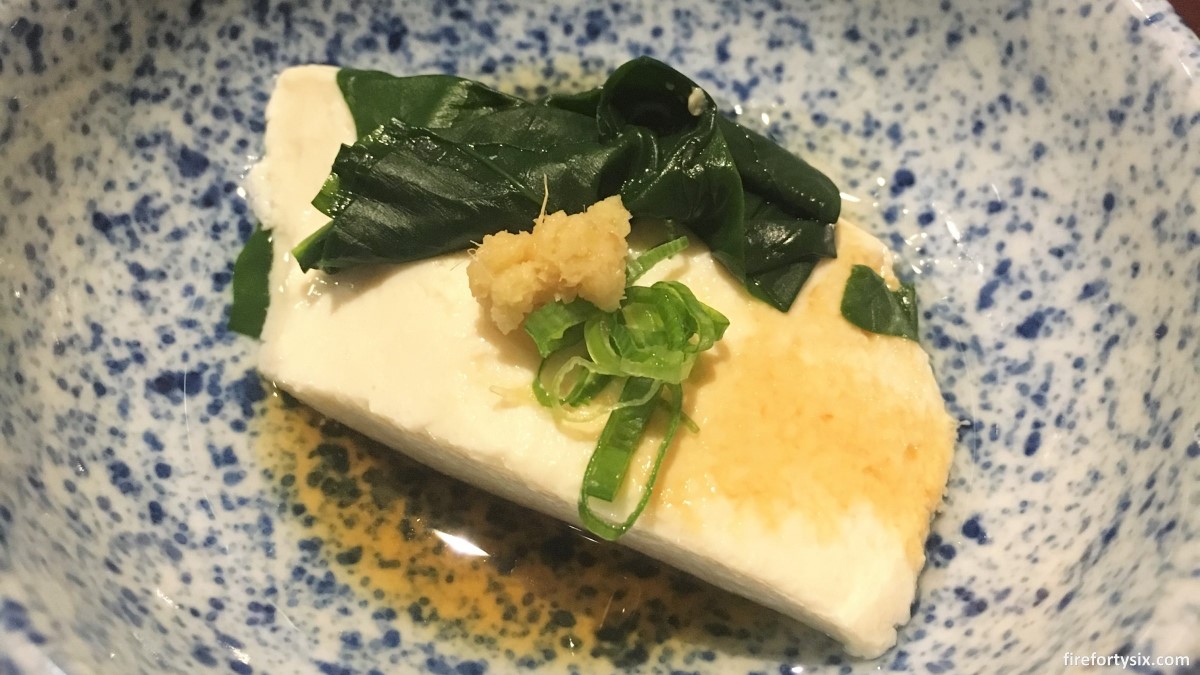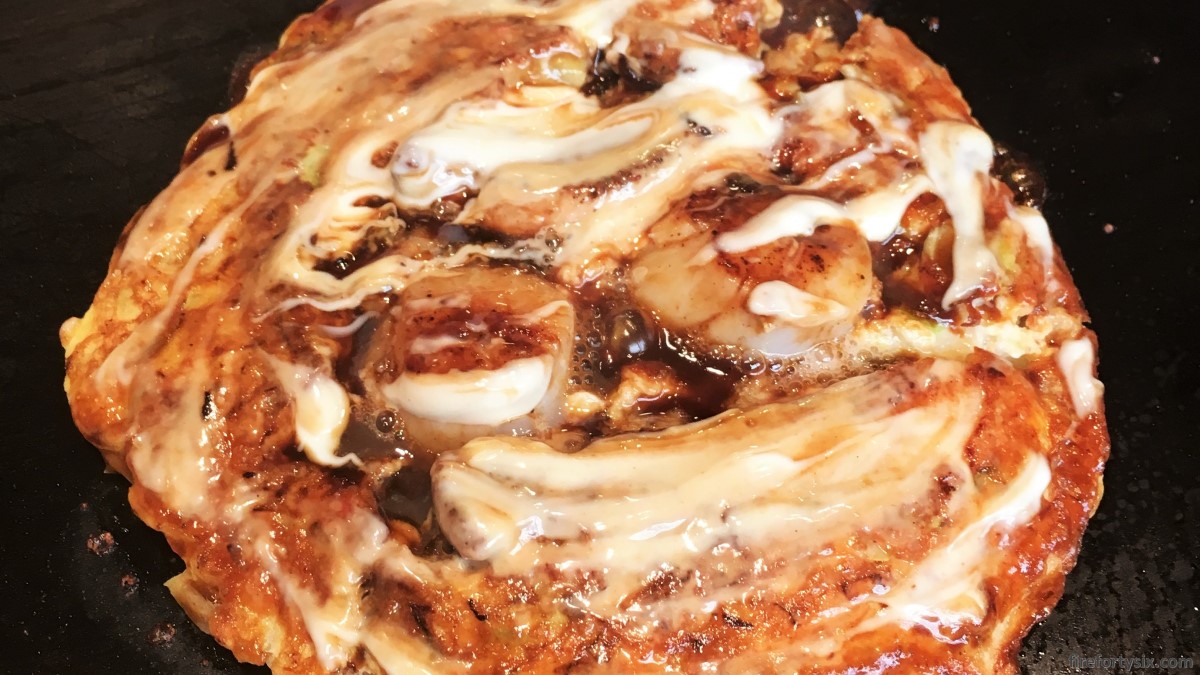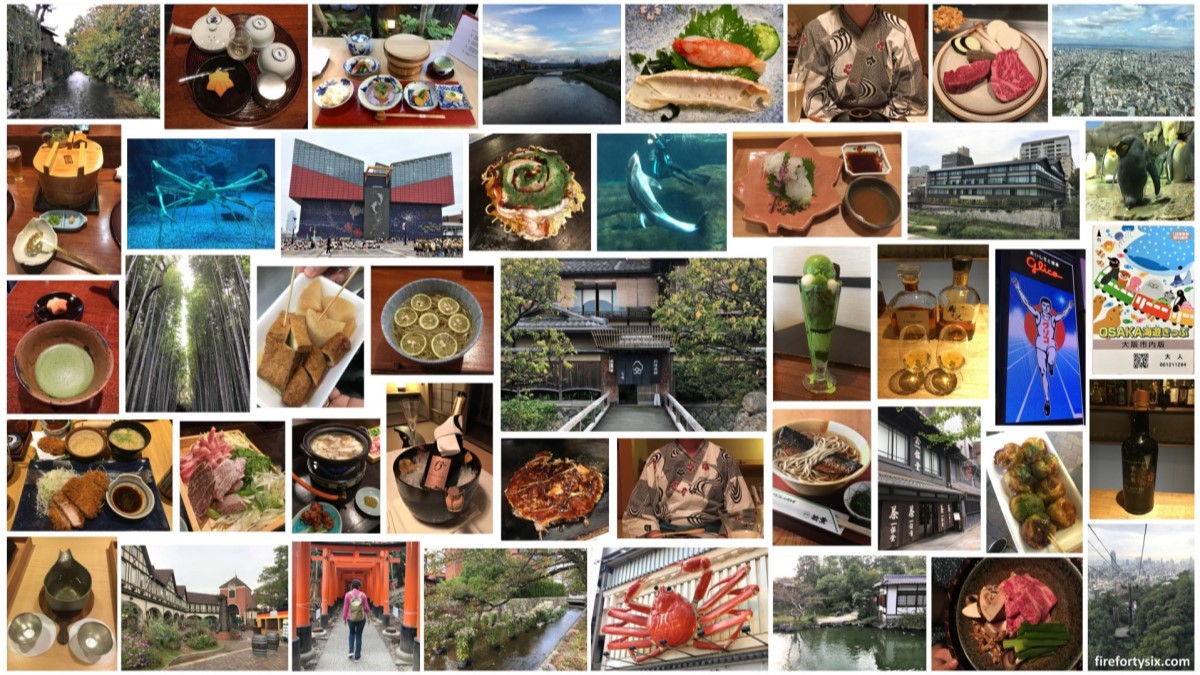It was Day Eight of our Kansai Autumn 2018 vacation and our last full day in Kyoto before taking the train back to Osaka the following morning. We packed an overnight bag, couriered our luggage to the Osaka Marriott Miyako and checked out of the Solaria Nishitetsu hotel.
It was a sunny autumn morning and we strolled over to the Ippodo Tea main store where we spent a relaxing couple of hours savouring very nice Japanese green tea. This was followed by a light lunch just down the street at Soba Roujina and a beautiful walk around the Kyoto Imperial Palace Gardens.
Our next spot was the most anticipated place of our entire vacation, and the one that we had planned our travel dates around — an overnight stay at Shiraume Kyoto along the Shirakawa stream in Gion.
I grew up watching Japan Hour on local TV during the weekends, and was always fascinated by the entire ryokan experience. So when we decided to visit Kyoto for the first time, our number one priority was to secure reservations at a nice ryokan.
Placing our trust in the power of crowd-sourced intelligence on the internet, we decided on Tripadvisor’s #1 traveller-ranked hotel in Kyoto, which unsurprisingly was a ryokan. It was #1 then, and when I just checked, more than two years later, it still is #1 now.
We submitted a reservation enquiry via their website and received an email reply from Tomoko-san, the innkeeper, the very next day. We managed to book the Umechirin Room for one night in October, and only after that did we apply for work vacation and book flights.
Our expectations were high as we walked over from the imperial palace, past the small but lovely Shirakawa stream.


When we finally arrived at Shiraume, our first impression did not disappoint. The building itself dates from the 1600s and was originally built as an ochaya where geiko and maiko live, study and work.
It has stayed with the same family across generations and was only “recently” converted to an inn during the middle of the previous century. I suppose time is relative, and anything less than an hundred years ago is considered recent in Kyoto.

Here it is again, in portrait mode. The entrance to the bridge over the stream leading to the main door had a barrier, ostensibly to prevent hordes of tourists who would otherwise be tempted to snap IG-worthy shots.


Our shoes were taken from us as we waited to check in, and in no time, we were in our spacious 420 sqft tatami-floored room. A wooden divider door separated the sleeping area from the dining section, where we were served welcome tea and snacks, as well as our leftover gyokuro tea leaves from Ippodo with the ponzu that we’d requested.

The serene view from the large window was a good accompaniment to the Uji green tea and wagashi sweets. We could see tourists walking past and snapping pictures of the building, but none ventured onto the bridge, so I guess the barrier and warning sign worked after all.
Once in a while, some ducks would float by, letting the soft current carry them downstream. We sat in our room, sipping our tea, watching the view and simply letting time pass.


Soon, it was time for our bath.
During our check in, we were asked three questions: (i) when we’d like to have dinner and if we had any food allergies, (ii) when we’d like to have have breakfast tomorrow and if we prefer Japanese or Western, and (iii) if we’d want to reserve one of their ofuros for a pre-dinner bath.
Our answers were respectively: 7pm, no, 8am, Japanese and of course!
So, at 5pm sharp, we were escorted to one of their two private bath rooms. Many of the ryokans that I’ve seen on TV have large onsen pools, but even though Shiraume was too small to accommodate a full-blown onsen, their ofuros provided a nice alternative.

There was a basin area, a dressing room and the bath and shower room. The highlight is of course the bath tub itself, made from Japanese Hinoki cypress, which gives off a warm fragrance and such a joy to soak in.
Given the age of the building and how long they’ve been in operation, I found it amazing that there was no trace of stain or algae on the bath. It looked and smelled like it was only recently installed. Sugoi.


Given the popularity of the ofuros, we were only allowed an hour to enjoy the facility. After we were all cleaned up and dried down, we hung out at the cute little library just outside of the bath, which had a range of books related to Japanese culture and also a small bar area with sake and soft drinks on the house.


At 7pm, we were ushered back into our room by the young and lovely Yuna, who would be our waitress for the dinner. The futons were stowed away and the dining area was set, including these interesting one-armed seats that provided good support while we sat on the floor.

We were dressed for the occasion in our yukatas and ninja socks. I’m sure there’s a proper name for these toe socks, but I like to call them ninja socks, just because it sounds more exciting. We had to leave the yukatas behind when we checked out, but we did get to keep the socks. Nice.
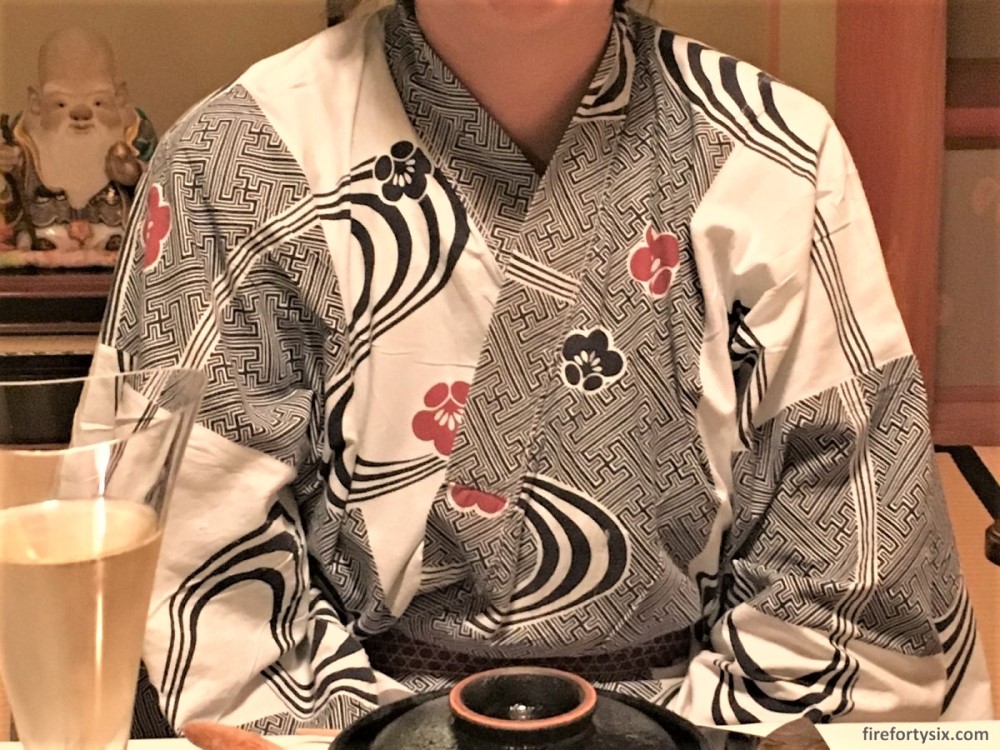
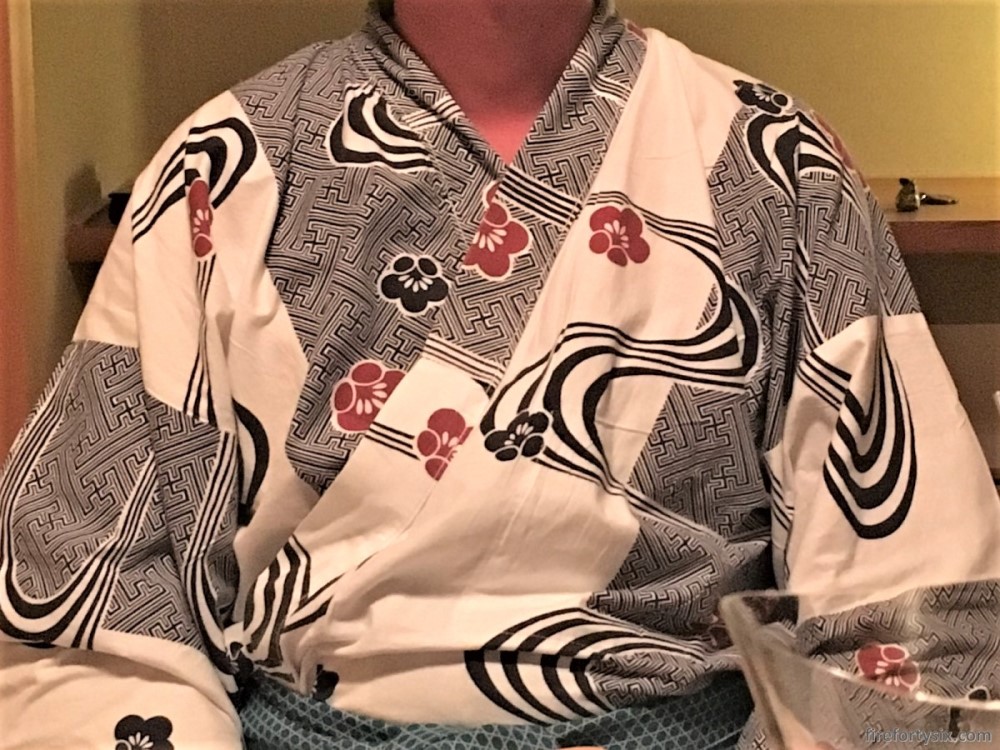
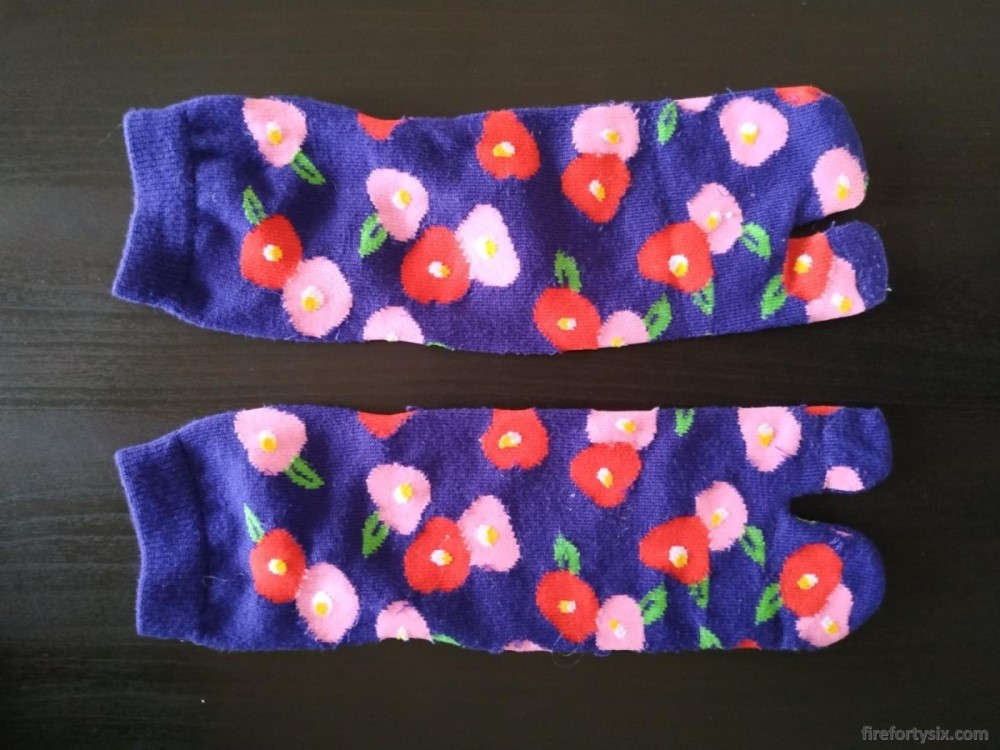

While we were waiting for our first course, Yuna opened the bottle of 13th Street Blanc de Noir sparkling wine that we had given them to chill earlier, and served them in these very elegant and unique champagne glasses.
The wine was very kindly provided as a surprise by my boss and good friend ET, who had sent it via courier from Tokyo, so that we could enjoy our meal with some bubbly that he knows is one of my favourites.
If you haven’t tried it before, please find a way to get your hands on a bottle. You will not regret it. And just to pique your curiosity further, let me just tell you that it’s from Canada (what?!).


The next time you visit Tokyo, or if you happen to live there, head over to Heavenly Vines in Ebisu and ask Jamie to explain to you why Canada produces one of the best wines in the world.
Budget at least an hour, maybe even two, and be prepared to be brainwashed convinced. There’s a good chance that you’ll end up buying a few bottles, and even start drinking in the shop itself. That’s how I fell down the rabbit hole, and have yet to find a way out.
Soon, the kaiseki dinner started. And boy what a dinner it was!
The menu sounded simple enough — appetiser, soup, sashimi, stewed dish, grilled dish, small dish, hot pot, rice and finally dessert. We had a very nice kaiseki lunch a few days earlier at Gion Karyo, and naturally had high expectations for this dinner.
Long story short, all our expectations were met, and then exceeded.

The appetiser started out strong, and had small dishes that were our personal favourites — fish eggs for The Wife, and nama yuba for me. In addition, there were intriguing presentations, like the chestnut skin on the right that was made of noodles (and hence totally edible), and the egg yolk that looked like persimmon on the bottom left.


Then came a soup of hamo (conger eel), matsutake mushroom, shrimp head and veggies. I recall one of my colleagues saying that, to him, matsutake smells like wet socks. But definitely no socks here, just a very rich and flavourful warm broth.


Followed by tai (snapper) and sanma (saury pike) sashimi.
Sanma is an autumn seasonal favourite and is typically grilled and served whole, guts and all. It is a test of your chopstick skills to be able to skillfully pick off the meat off the bones without touching the bitter innards. Let’s just say I’ve had quite a few bitter sanma in my time.
Served as sashimi, it is rich and flavourful. In sushi shops during autumn, you can hear many locals ordering the seasonal trio of aji (horse mackerel), iwashi (sardine) and sanma sushi. I tried the combination once, but found it too strong flavoured for my liking. But sanma paired with the light-tasting tai was just nice here.


The stewed dish was simple but delicious and a big hit with The Wife, who is crazy happy whenever she tastes yuzu in a dish. Because, yuzu is life.


Next was the grilled dish of mackerel in orange sauce, where the heaviness and oiliness of the fish was balanced by the citrus in the sauce. Plus, I’m a sucker for ginko nuts that randomly appear.


In your typical Western tasting menu, you’d probably be served with a sorbet or some sort of palate cleanser. We got a small dish of grapes, pomegranate and tofu sauce instead. Definitely better than a plain old sorbet.

The next course was my favourite of the entire meal — beef sukiyaki. First, the raw ingredients are presented (look at the marbling on the beef!), then the meat is cooked in a cast iron pot followed by the sukiyaki sauce, leeks and four types of local mushroom.
Everything is left to simmer for a while, and then you go itadakimasu and proceed to vacuum everything up, remembering to first dip the beef in a side bowl of beaten raw egg. I can’t help but drool as I’m typing this now.




Tomoko-san came in and sat with us for a while, asking about our vacation in Kyoto so far and sharing with us the history of the building.
Including how the ceilings were deliberately built low to deter samurai (in the old days) from easily swinging their swords inside, how the wood absorbs the breath of every guest making all of us part of the building and how she regularly brings in master craftsmen, or shokunin, to preserve this very very old building.
She was very polite and very elegant and must have made that interesting and engaging speech countless times to countless guests. So I decided to mix things up a bit and threw her a curve ball.
“Have you ever tried white Pinot Noir from Canada?”, I asked.
She tilted her head, looked at me funny and hesitantly replied: “No…”
“Would you do us the honour and share a glass with us?” She graciously accepted a glass of the 13th Street Blanc de Noir.
Trying my best to channel my inner Jamie, I explained how Canada spans the same range of latitudes as the wine growing regions in France, and that Canada is not just about ice wine etc etc.
She was quite intrigued by this information, and I could tell that she found the wine to her liking. She started sharing about her days in the US, including her drinking parties with her good friends involving many many bottles of wine.
About how she grew up in this very building and still remembers running around when she was a young girl, and how she made the decision to carry on the family tradition and be the innkeeper of Shiraume.
We had almost finished the bottle by then, so I can’t be sure, but I thought I sensed just the tiniest tinge of regret perhaps, that she had to put duty and tradition above her personal preferences.
Like how we heard from the second generation owner of Honmura-an, a soba-ya in Tokyo, who had expanded overseas and opened their New York branch, but had to reluctantly close it down and come home to take over the main shop because his father fell ill.
But I could have been mistaken.
In any case, I’d like to think Tomoko-san had an interesting conversation with us that night, and had the chance to reminisce on her fun days overseas.
She left after a while to tend to her other guests, and we were served our rice course followed by dessert. Soya sauce ice cream does not taste as strange as it sounds, try it if you ever get the chance.


Dinner was finally done, and we were in a blissful food coma. As a souvenir, the individual menu cards were collated in a convenient pack for us to bring home.

We wanted to go out and take a night-time stroll around Gion, but were too lazy. As a consolation, we took a photo of Shiraume at night instead. Here’s a side-by-side comparison of the day-time vs night-time view (move the slider to compare). Pretty, isn’t it?


When we got back, the futons were already laid out and we hibernated until the next morning.
I’m a very light sleeper and unfortunately occasional sounds of traffic filtered through the wooden window and dividing door, which woke me up a few times that night. But other than that, it was a very comfortable sleep on some thick and fluffy futons. The Wife slept like a pig through the entire night, so your mileage may vary.
After we woke and cleaned up, we headed downstairs for breakfast. The scenery was slightly different from the ground floor, but still as nice, with occasionally duck sightings.


Our Japanese breakfast was impressive, and would easily rival any dinner in any Japanese restaurant in Singapore. We were still digesting our kaiseki dinner from the night before, but somehow managed to finish, and enjoy, everything.
Note to self: next time, have an early dinner and late breakfast and don’t make the stomach work so hard.



You know how over-the-top the breakfast is when you even get dessert at the end.


Since we only had an overnight bag, packing and checking out was quick. After settling our bill, we were given various souvenirs and were escorted all the way out to the bridge entrance and sent off with a deep bow and warm wave goodbye.
We walked down the street to the intersection and turned around to take one last look, and our escort was still there! She bowed and waved at us again. It seemed like she would stay there until we were completely out of sight, so we quickly turned the corner so that she could go back inside.
Only in Japan.
To say that we thoroughly enjoyed our very first ryokan experience at Shiraume would be an understatement. Tomoko-san is an impeccable host and runs her beautiful inn perfectly.
I’ve heard the term omotenashi used many times before, but nowhere is this more evident than at Shiraume. They truly do all they can to put their customers first, and offer the best hospitality and experience that they can provide.
Once the world can travel again, we hope to be back in Kyoto soon. And when we are, we will definitely stay at Shiraume.
Kansai Autumn 2018
Eleven days in Osaka, Kobe and Kyoto
The world has changed forever due to that-which-must-not-be-named and international travel is on an indefinite pause. There are many countries we want to visit again and Japan is definitely among the top choices.
In the meantime, as we remain grounded in Singapore, we can look back and remember the wonderful time we had in our eleven days in Osaka, Kobe and Kyoto during the autumn of 2018, two years and a lifetime ago.
Paperback: www.amazon.com/dp/B08DC84GBD
eBook: www.amazon.com/dp/B08DD8P8W3

